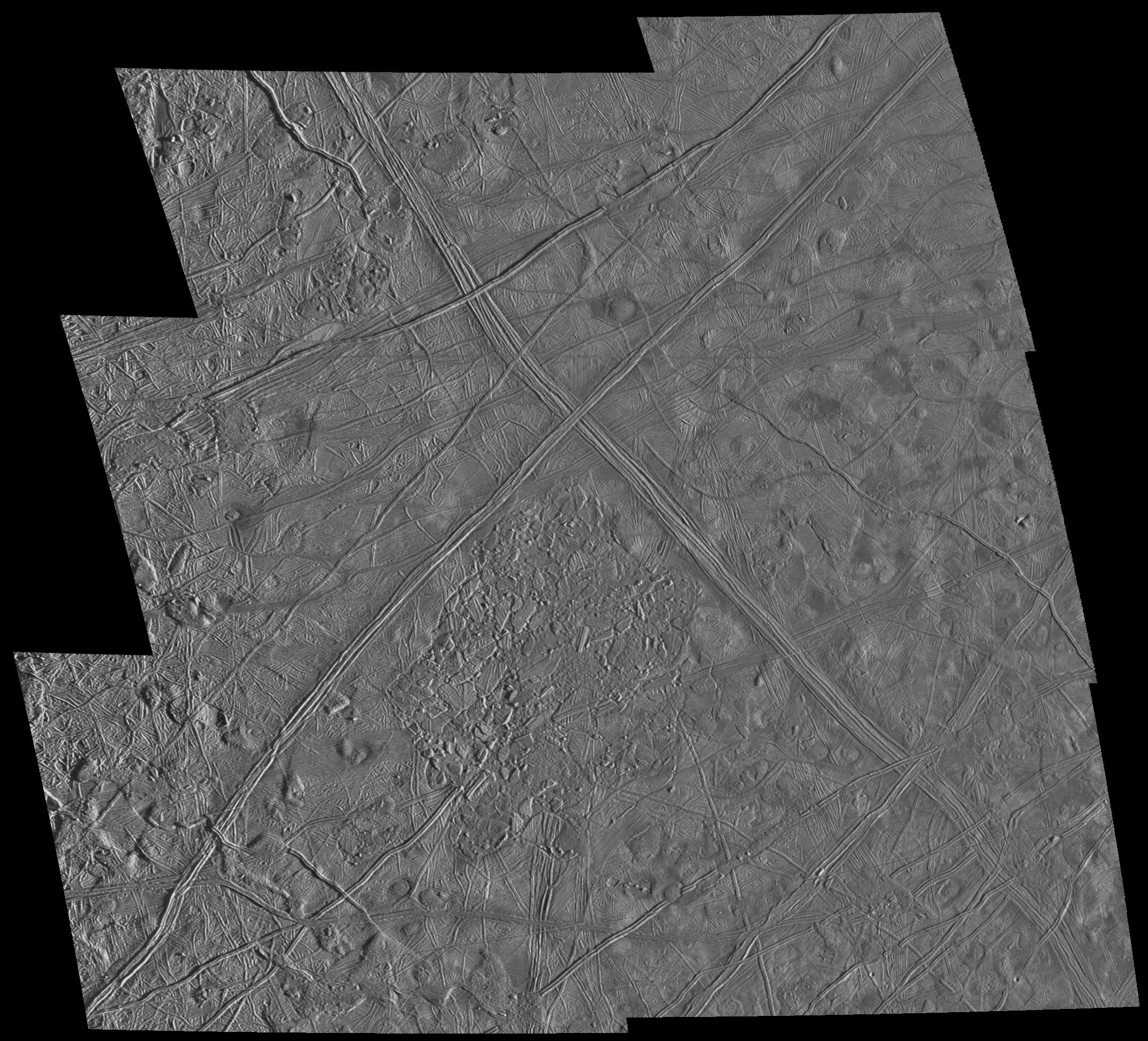All Resources
Prominent "X" on Europa

This six frame mosaic of Europa's surface shows a variety of interesting geologic features. The prominent "X" near the center of the mosaic is the junction of two "triplebands." Triplebands are seen here to be made up of parallel sets of ridges, and can be traced for over 1,600 kilometers (off the image) across Europa's surface.
Directly to the south of the "X" is a 75 by 100 kilometer (km) area where the icy crust of Europa has been disrupted by activity from below. This activity could be motion in liquid water, convection in warm ice, or some other process. Many icy blocks, some as large as 10 km across, have been rafted from the edges of this zone. Also seen in this mosaic are various pits and domes that range in size from a few kilometers to nearly 20 km across. These geologic features provide evidence of thermal activity below Europa's surface at the time that the features formed.
These images were obtained by the Solid State Imaging (CCD) system on NASA's Galileo spacecraft during its sixth orbit around Jupiter. North is to the top of the picture, with the Sun illuminating the scene from the right.
The center of this mosaic is located near 10 degrees north latitude, 271 degrees west longitude. The image, which is about 300 by 300 km across, was acquired at a resolution of 180 meters per picture element.


